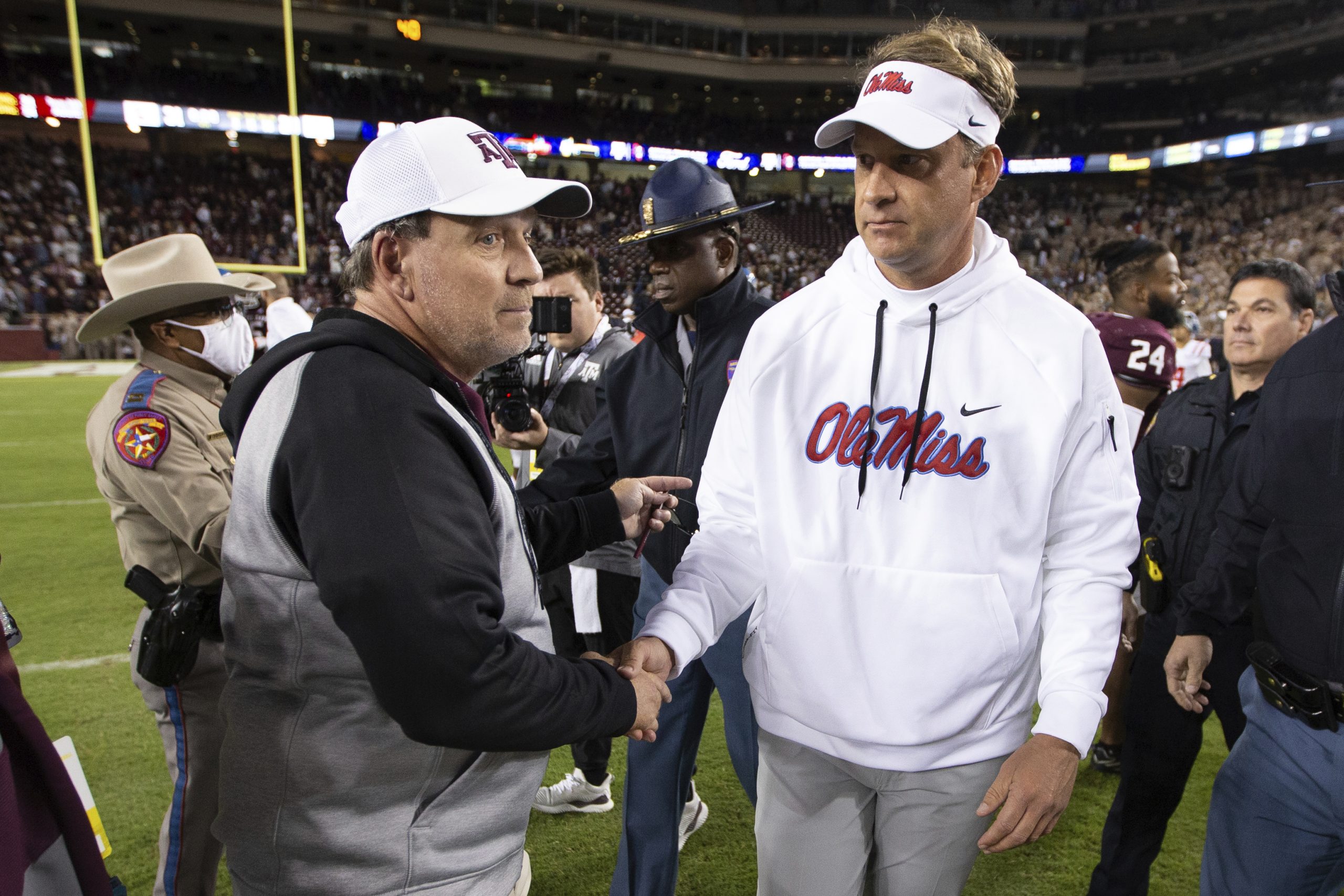Ole Miss football coach Lane Kiffin talks about his Saturday opponent, the Texas A&M Aggies, as if he is describing the 1972 Miami Dolphins, the only perfect team in pro football history.
“These guys are absolutely loaded,” Kiffin said of the Aggies. “It’s actually a mind-blowing collection of talent. As you watch them offensively, defensively, return game, special teams, it really is an NFL roster – height, weight, speed, explosiveness.”

The Ole Miss coach said A&M has “receivers that can score at any time and great running backs. Their defense is playing as well as anyone in the country. The collection of defensive linemen has to be one of the best ever. And Edgerrin Cooper (linebacker) is playing like the SEC Player of the Year. … They’ve done a phenomenal job of getting a collection of players that are extremely elite and talented.”
Well, don’t look now, but that same “mind-blowing” and “extremely elite” Texas A&M talent will roll into Oxford with a 5-3 record, coming off a 5-7 season last year. That’s right: The Aggies are 10-10 over their past 20 games.
Indeed, you can make the case that Texas A&M spends more money per victory than any school in NCAA history and surely more than those perfect 1972 Dolphins. Fisher famously is in the third year of a fully guaranteed, 10-year, $95 million contract. If the Aggie administration doesn’t like the fact that A&M is 10-10 over the last 20 games and 8-9 in games away from home under Fisher, well, he can be bought out. It would only cost them $77 million. That’s a lot of oil, even at today’s prices.
Texas A&M also pays its football assistants a total of nearly $7 million a year. The school recently spent $485 million rebuilding and refurbishing Kyle Field. The Bright Football Complex, where the Aggies train, has been updated to the tune of $20.8 million. And we haven’t even gotten to NIL money, which A&M clearly spends lavishly. As the old saying goes, pretty soon, we’ll be talking about some real money.
So, what do you think? Is A&M getting a good return on its investment? We can put this in simpler terms. Appalachian State spent $8.5 million on football last year. That’s coaches’ salaries, travel, equipment, expenses, everything. Texas A&M paid its head coach more than App State’s entire annual football budget. Final score from College Station on Sept. 10, 2022: App State 17, Texas A&M 14. App State went on to finish fourth in the Sun Belt.
Remember, Kevin Sumlin was fired after achieving a 51-26 record at Texas A&M. That’s a winning percentage of 66.2%. Jimbo Fisher is 44-24, a winning percentage of 64.7%. A&M bought out the remainder of Sumlin’s contract for $10.4 million. So the Aggies paid Sumlin more than $10 million not to coach. They are paying Fisher roughly $100 million to coach. Sumlin won a higher percentage of games. Frankly, Texas A&M is college football’s poster child for fiscal profligacy.
That said, the Aggies are as dangerous as they are under-achieving. Anybody who follows college football recruiting even a little has to know how stacked the Aggie talent is. Here’s a sample: Four years ago, McKinnley Jackson of George County (Lucedale) was the most highly recruited high school football player in Mississippi, a 6-foot-3, 325-pound defensive lineman who threw people around like rag dolls. (I thought he was as good as I had ever seen in this state.) When Mississippi beat Alabama in the annual all-star game that December of 2019, Jackson was the MVP. Yes, a defensive lineman was the MVP. Alabama and LSU wanted him. So did Georgia. So did everybody else. Texas A&M got him. Now a senior starter at nose tackle and a captain, Jackson nevertheless ranks fourth among Aggie defensive linemen in tackles, tackles for loss and sacks. In other words, A&M has several more like him.
So why isn’t Texas A&M kicking butts and taking names? Why did they lose to Miami by 15 points? Why are the Aggies unranked? Why, again, are they a mundane 10-10 over their last 20? Why are they 3-point underdogs at Oxford Saturday?
There’s a bottom line here. Fisher – and his boss Ross Bjork, formerly of Ole Miss – know what it is. Fisher isn’t getting it done.
Yes, you say, but Ole Miss pays Kiffin $9 million a year. That’s a lot of money in Oxford, Mississippi. And you are right. Currently, at least, and no matter what happens Saturday, the Rebels are getting a whole lot more for their money.

